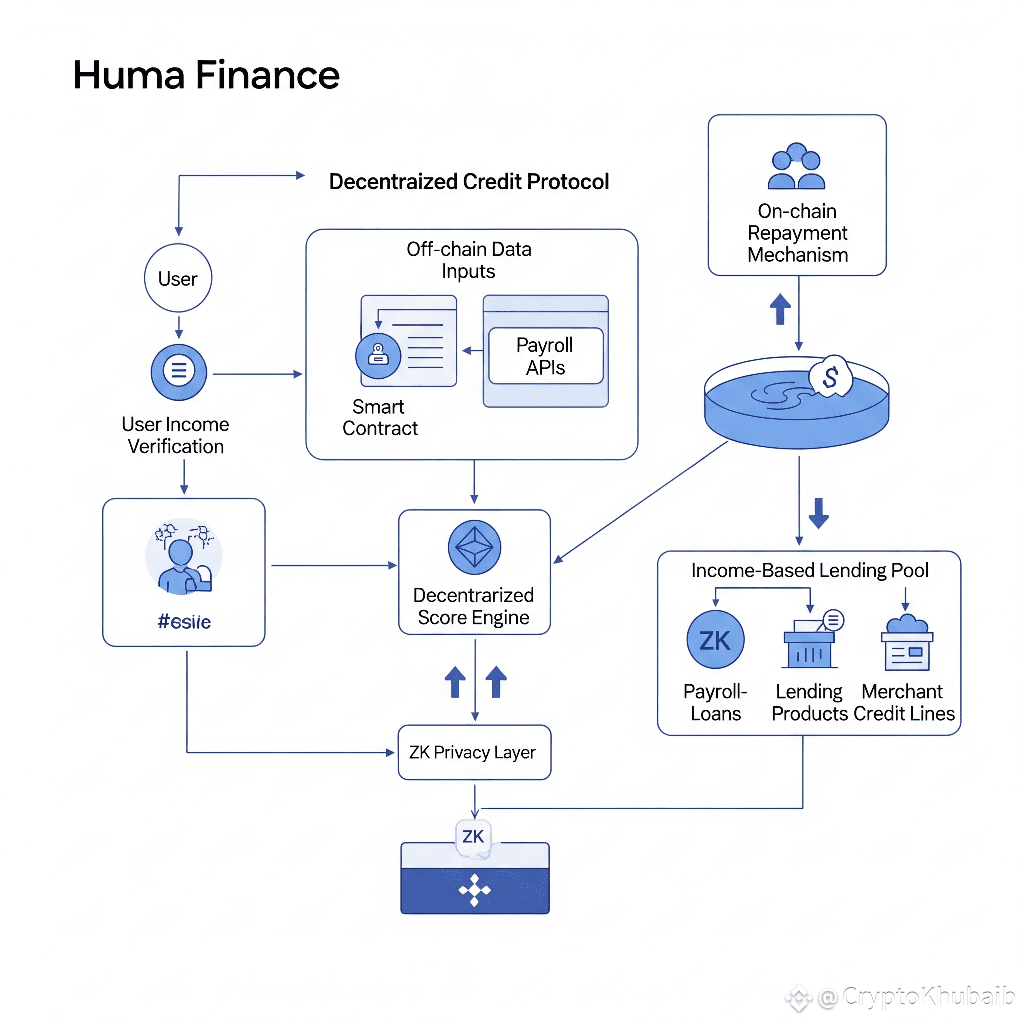In today’s DeFi landscape, the leap from on-chain activity to real-world economic utility is critical. This is where @Huma Finance 🟣 plays a revolutionary role. By leveraging blockchain’s transparency and immutability, Huma Finance builds a real-world credit infrastructure—unlocking new opportunities for capital deployment, credit access, and financial inclusion.
🔍 What is HumaFinance?
HumaFinance is a decentralized protocol focused on facilitating real-world lending and credit scoring using on-chain and off-chain data. Its infrastructure enables financial applications to offer income-based lending, revenue-backed credit, and on-chain risk assessment. With the rising demand for real-world asset (RWA) integration in DeFi, Huma bridges traditional finance with web3 efficiency.
🧩 Key Features and Technical Innovations
1. Decentralized Credit Scoring System
Unlike traditional finance, where centralized agencies control credit decisions, Huma enables programmable and privacy-preserving credit scoring using verifiable income and transaction data. This promotes inclusivity, especially for unbanked or underbanked users.
2. Income-based Lending Protocols
Credit lines are determined based on real-time income flows, both on-chain (e.g., staking/yield farming) and off-chain (e.g., salaries via payroll APIs). This shifts the collateral model from "asset-backed" to "income-backed" lending—ideal for gig workers and freelancers.
3. Composable Infrastructure
Huma provides APIs and SDKs for developers to build their own credit products, risk engines, or lending apps using Huma’s protocol. Everything is modular—risk models, repayment flows, and identity verification mechanisms are all pluggable.
4. ZK-Based Privacy Layers
Sensitive user data such as salary or transaction history is secured via Zero-Knowledge Proofs, enabling verification without revealing private details—critical for compliance and trust in global deployments.
5. Token Utility & Governance
The $HUMA token governs the protocol. Holders vote on credit model adjustments, validator onboarding, and community initiatives. In the future, the token may also act as collateral in the protocol itself.
🌍 Use Cases and Applications
Payroll-Backed Loans: Employees can receive short-term loans based on proof of future income.
Merchant Financing: Small businesses can secure loans using on-chain revenue data (e.g., NFT or token sale revenue).
Gig Economy Lending: Platforms like Uber or Fiverr can integrate Huma to offer credit lines to workers.
Underbanked Credit Access: Emerging economies lacking credit infrastructure can bootstrap a system with Huma.
🔮 Future Insights & Impact
Huma Finance isn't just building a lending platform; it's creating the foundation for a global decentralized credit economy. As real-world asset integration becomes essential in DeFi, protocols like Huma will become the bedrock for applications serving billions. Expect integrations with stablecoins, payroll systems, real-world payment providers, and even central bank digital currencies (CBDCs) in the near future.
By aligning real income and identity data with on-chain mechanics, Huma ensures a trustless, compliant, and scalable system that lowers credit risk while increasing capital efficiency.
📢 Follow @Huma Finance 🟣 and stay updated on how they're redefining on-chain credit infrastructure.
#HumaFinance $HUMA @Huma Finance 🟣


